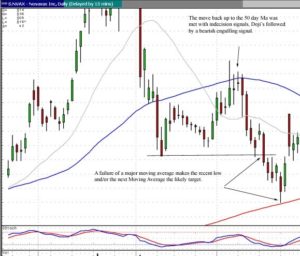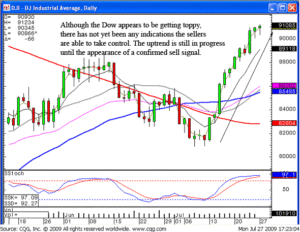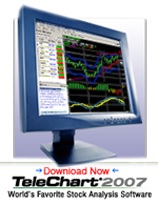Investors and traders can profit from picking stocks that are hot. But, how does one go about trading hot stocks? One problem in long term investing is that by the time a stock is hot it has commonly risen to a high price to earnings ratio or price to sales ratio or fallen dramatically. A hot stock rises in price as the stock market discounts its intrinsic stock value or falls on poor earnings reports. Good stock picks in long term investing are overlooked stocks. The smart long term investor or the day trader picks these stocks and sells them when they become hot stocks. Trading hot stocks is a different matter. Trading hot stocks has to do with stocks that are currently popular, falling or rising in stock price, and which often present with high trading volume and stock volatility. Candlestick stock charts are the tool of choice of many who trade hot stocks. Technical analysis of stocks with Candlestick analysis gives traders an objective view of market sentiment and easy to read signals up which to act.
Hot stocks recently include Boeing with increased sales, Amazon with earnings that did not fall as much as anticipated, and Allegheny Technologies whose earnings went up 70% while the stock fell 3% because analysts had expected better. In these types of situations traders buy stock or sell stock based upon their expectations of adjustments in stock prices. There is typically a short period of market inefficiency as traders and investors decide how to price a stock based upon both new information, and more importantly, new expectations. In trading hot stocks with Candlestick patterns a trader reacts to signals that predict the next movements of stock prices. Easy to read Candlestick signals give traders an objective appraisal of what the market as a whole is thinking about an individual stock or stock index. Candlestick signals work for trading hot stocks directly and for options trading and futures trading of hot stocks as well.
Depending upon what made a stock hot, its period of high trading volume, high stock volatility, and stock trading opportunity may by just a few hours or may last for days, weeks, or months. It will depend upon how long it takes for the market to reach a consensus on the value of the stock in question. In all stock trading it is important for the trader to have a clear idea about the fundamentals that drive a stock price. Then the trader knows the general range in which a stock will trade and the general factors that will affect price. However, it is with technical analysis tools such as Candlestick patterns that traders can profit most from trading hot stocks. These stocks can change price rapidly and reverse in price quickly. With the use of Candlestick signals a trader can successfully and profitably anticipate price changes. In the very short term the Candlestick trader is able to objectively read the market and avoid the mistakes of getting carried away with market enthusiasm or disappointment. No matter what the market is doing it has done it before. Price patterns repeat themselves and Candlestick signals allow traders to profit from that fact when trading hot stocks.
This market would be terrible IF you were not short. However, candlestick analysis is a very effective trading method for making sure your portfolio is in the right direction at the right time. As seen in our pre-market comments, the first suggestions of adding short positions to the portfolio started over two weeks ago, not because there was any great foresight into the coming downtrend, but because there were a candlestick sell signals at obvious resistance levels. Utilizing the simple rules applied to candlestick signals would now have a portfolio positioning predominantly short.
Please join us tonight with our guest speaker been Adrienne Toghraie. Gain some insights and how to overcome some of the emotions of investing. This is an important element in learning how to use a trading method effectively and then how to mentally control your emotions.
Chat session tonight at 8 PM ET, Everyone is welcome!
Make sure you check out the commodity trading special. Knowing how to trade commodities correctly, especially with candlestick analysis, allows an investor to trade markets profitably and be able to analyze the results of one market based upon the price movement of specific commodities. You do not like or know how to short stocks? That is a good reason to understand the commodity and currency markets. The visual graphics of candlestick analysis allow an investor to make profits in spite of what one market might be doing. Today, there were huge profits made by investing in the US dollar. That became evident that as stock investors worldwide were becoming less confident, the US dollar became a haven for the insecurity throughout the investment world. Click here for the commodity trading special.
The Candlestick Forum Team
5 Star Trading Plan With 30 Day Free Membership Trial – 25%OFF!!
Website special reflects current newsletter. If you are reading an archived newsletter you will be directed to Current Website Special


















